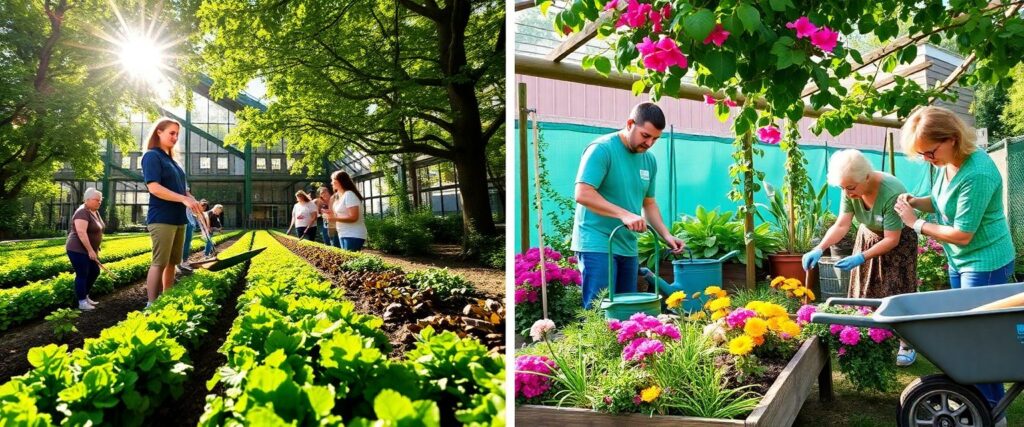7 Essential Gardening Tips for a Thriving Green Space

Gardening is more than just a hobby – it’s a rewarding pursuit that connects us with nature, provides fresh produce, and beautifies our surroundings. Whether you’re a seasoned green thumb or just starting out, these essential gardening tips will help you create and maintain a thriving garden space.
1. Know Your Soil
The foundation of any successful garden is healthy soil. Understanding your soil type and it’s pH level is crucial for plant health and growth.
Sandy, clay, and loamy soils each have different characteristics and need different care.
Tip: Conduct a soil test to determine your soil’s pH and nutrient content. Many local extension offices offer this service for a small fee.
Once you know your soil type, you can amend it accordingly. For instance, clay soils benefit from the addition of organic matter to improve drainage, while sandy soils may need amendments to help retain moisture.
As am amazon associate, I may receive a commission on eligible purchasers at no cost to you. I endeavour to review only high-quality products to help people make informed decisions.
2. Choose the Right Plants
Selecting plants that are well-suited to your climate, soil type, and available sunlight is key to gardening success. Native plants are often a great choice as they’re adapted to local conditions and tend to be more resistant to pests and diseases.
Consider creating a list of plants you’d like to grow, then research their specific needs:
- Sunlight requirements
- Water needs
- Soil preferences
- Hardiness zone compatibility
By matching plants to your garden’s conditions, you’ll set yourself up for success and reduce the need for excessive intervention.
3. Master the Art of Watering
Proper watering is crucial for plant health, but it’s often misunderstood. Overwatering can be just as harmful as underwatering.
The key is to water deeply but less often, encouraging roots to grow deeper and become more drought resistant.
| Watering Method | Best For | Pros | Cons |
| Drip Irrigation | Vegetable gardens, flower beds | Water-efficient, reduces leaf diseases | Initial setup cost |
| Sprinklers | Lawns, large areas | Covers large areas quickly | Can be wasteful, may promote leaf diseases |
| Hand Watering | Container plants, small gardens | Precise control, water conservation | Time-consuming for large areas |
Tip: Water early in the morning to reduce evaporation and allow leaves to dry before nightfall, which helps prevent fungal diseases.
4. Embrace Mulching
Mulching is a simple yet effective technique that offers many benefits to your garden:
- Conserves soil moisture
- Suppresses weed growth
- Regulates soil temperature
- Adds organic matter to the soil as it decomposes
Apply a 2-3 inch layer of organic mulch around your plants, being careful not to pile it against plant stems or tree trunks. Organic mulches like wood chips, straw, or compost are preferable as they improve soil quality as they break down.
5. Practice Proper Pruning
Pruning is essential for maintaining plant health, encouraging growth, and shaping plants. However, incorrect pruning can damage plants and invite disease.
Here are some general pruning guidelines:
- Remove dead, damaged, or diseased branches first
- Prune to improve air circulation within the plant
- Make clean cuts just above a bud or branch collar
- Avoid pruning in late summer, as it can stimulate new growth that won’t harden off before winter
Different plants have different pruning needs, so research the specific requirements for each plant in your garden.
6. Implement Companion Planting
Companion planting is the practice of growing certain plants near each other for mutual benefit. This technique can:
- Improve plant growth and health
- Deter pests naturally
- Attract useful insects
- Maximize space in your garden
Some classic companion planting combinations include:
- Tomatoes and basil
- Corn, beans, and squash (the “Three Sisters” method)
- Marigolds and vegetables (marigolds deter many garden pests)
- Roses and garlic (garlic helps prevent fungal diseases in roses)
Experiment with different combinations to find what works best in your garden.
7. Stay on Top of Maintenance
Regular maintenance is key to a thriving garden. Establish a routine that includes:
- Weeding: Remove weeds before they go to seed to prevent future problems
- Deadheading: Remove spent flowers to encourage continued blooming
- Monitoring for pests and diseases: Early detection allows for prompt treatment
- Fertilizing: Feed your plants according to their specific needs and the time of year
- Cleaning and sharpening tools: Well-maintained tools make gardening easier and more enjoyable
By staying proactive with garden maintenance, you can prevent small issues from becoming big problems.
Implementing these essential gardening tips will help you create a thriving, beautiful garden space. Remember, gardening is a blueprint that leads towards continuous learning and adaptation.
Don’t be afraid to experiment and learn from both your successes and failures.
As you set off on your gardening adventures, having the right tools to harness can make all the difference. The Carsolt 10 Piece Stainless Steel Heavy Duty Gardening Tool Set provides a comprehensive selection of high-quality tools to tackle a wide range of gardening tasks.
From planting and pruning to weeding and cultivating, this versatile set confirms you’re well-equipped to put these gardening tips into practice.
Happy Gardening. For more articles about gardens and homesteading visit https://simplehomesteadtools.com